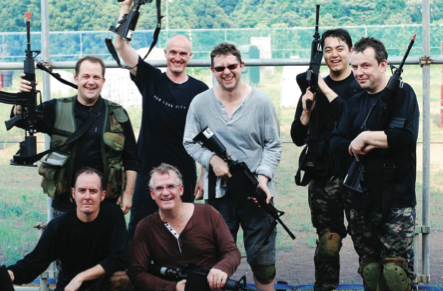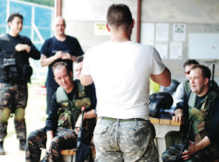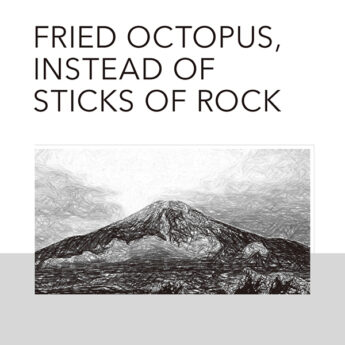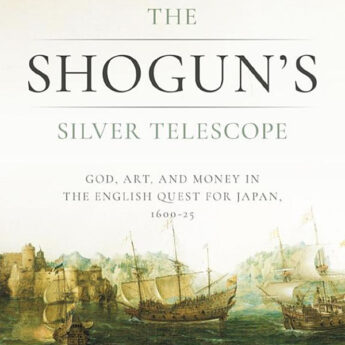
A journalist takes one for the team, along with diplomats and business people, at a unique training facility
There is a sharp report followed by a profanity. Someone has just been shot. A round impacts against the wooden crates to the side of me, making it clear that my position has been detected. Another shot kicks up dust at my feet and I know it’s time to move. I make a sudden shift for the cover of some stacked oil cans, but my opponent had predicted my move and bullets are zipping around me as I run.
Inevitably, one of the rounds finds its target and I feel it sting as it slaps into my shoulder. Looking at my “wound”, I am relieved to find that it is only a splotch of orange paint. I raise my arms above my head and trudge from the field. For me, this war is over.
Paintball has a strong following in some other countries, but remains relatively uncommon in Japan. Indeed, Avi Mazalto, who set up the War Zone paintball field in Chiba Prefecture in May 2010, says it is the only tactical facility of its kind in the country.
“We have been very busy since we set it up last year, with firms and even embassies sending teams to play”, said Mazalto, who previously served in the Israeli Army Special Forces, is a 3rd Dan black belt in karate, and twice Israeli champion in the sport.
“Many of the firms that come to us want to build teamwork and leadership skills, and what participants do on the paintball field can help them to understand that, when they work together, the end results are better”, he said.

Former Israeli Army special Forces operative Avi Mazalto (back to camera) briefs his men.
Firms and embassies—teams from the Canadian, Chinese and South Korean diplomatic missions have already fought it out on the field—generally come for either a morning or afternoon session, each of which lasts up to three-and-a- half hours and involves a series of game scenarios for the two opposing teams.
The most basic game begins with the opponents, at either end of the 120m-long field, given the task of capturing the other team’s flag and returning it to their own starting position.
Each player is obliged to wear a sturdy helmet with a full face mask and visor—Mazalto is absolutely firm that no one removes their helmet within the fence that marks the boundary of the field, and with his fighting skills, he’s not a man you cross. Players wear vests with pockets to hold spare magazines and are urged to strap on kneepads.
The weapon with which each player is equipped is a compressed air gun that looks remarkably like a real machine gun—curved magazine, flash suppressor, skeleton shoulder stock— but only fires balls of paint.
But make no mistake, those rounds can hurt when they strike home.
Most teams start their first game fairly slowly, as they come to grips with tactics, the unfamiliar weapon, changing magazines and the lie of the land.
Very quickly, however, most learn the value of covering one another as they advance, always having a player at the back to mop up any infiltrators and working as a team.
The field is studded with obstacles or defensive cover, from a wooden construction in the middle of the field to oilcans and even an inflatable Humvee, but constant movement appears to be a sound tactic.
Mazalto’s games become increasingly complex; he has devised scenarios that bring in spies, medics and, finally, a huge free-for-all, but the lesson that is there to be learned is that the solo player doesn’t generally last all that long.
It’s all about being part of the team.






